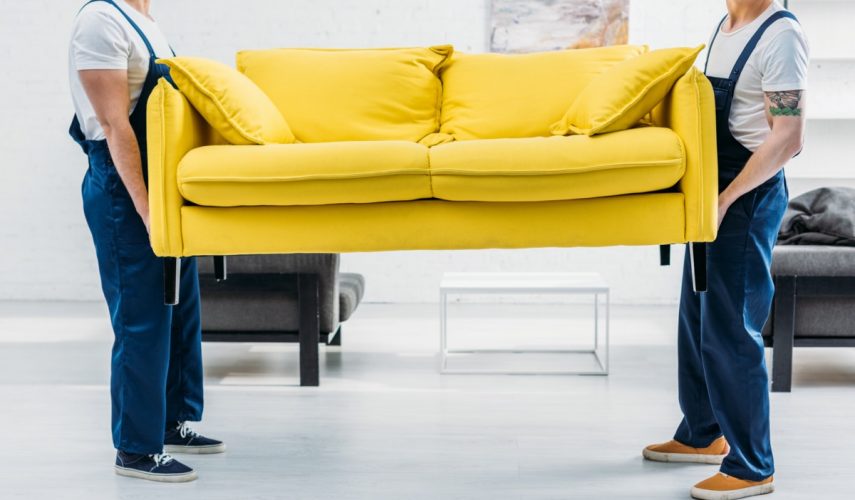Safe Delivery of Goods
Delivery is arguably the most important part of running any business whether offline or online. Unless you specialise in low-end items, people already expect a certain level of quality. It is also the most important part of moving to new premises or moving abroad, along with shipping containers you also need to think about the packaging of your furniture. Only Oak Furniture certainly put the quality of delivery as a high priority.
Shipping Furniture Overseas
If you’re planning to move abroad, you may be wondering ’How Do I Ship Furniture Overseas?’ Unlike smaller items that can be packed into boxes, when shipping furniture overseas, care must be taken to ensure that each individual item has been carefully packed and suitably protected to minimise damage whilst inside a shipping container.
Items of Furniture that can be Shipped
Smaller furniture items like chairs, bedside cabinets, or bookcases should be thoroughly wrapped with moving blankets which are then stretch wrapped to reduce chances of damage or rubbing.
Before wrapping the drawers can be filled with small items to reduce shipping costs which are based on the volume of the total shipment. Utilising all available spaces will greatly reduce the costs of shipping furniture overseas.
Shipping sofas or armchairs? Each item is first wrapped with craft paper and then a large bubble wrap is used to provide further protection. No heavy items should be placed in the seating areas in order to avoid the indention of leather or material.
Dismantling. Professional movers can often dismantle large items of furniture like wardrobes or dining tables. Each piece is then carefully wrapped before shipping.
This further reduces the furniture shipping costs by reducing the overall size of the shipment.
You can always keep up to date with the recent changes in the shipping industry right here
How to Organise a Safe Delivery
For furniture and antiques, it’s even more important to organise a safe delivery. After all, these are high-value items, and if a product gets damaged along the way then the customer will refuse to take it, and you’ll be left shouldering the cost. The good news is that organising a safe delivery doesn’t have to be difficult. Here’s how to go about it.
Know your Options
The safest way to ship antiques is usually to work with a specialist crate and ship company, which will typically collect the product, safely crate it, and then ship it via freight trucks and transport ships. However, crating can also be expensive, so you also have the option of using a small move specialist. Wherever possible, avoid transporting antiques via a regular delivery company. Instead, find someone with experience working with antiques so that you know they’ll take care of the goods.
Make it easy for Customs
When you’re shipping internationally, you’ll need to consider local customs laws and go out of your way to provide as much information as possible on any documentation. The last thing you want to happen is for your product to ship safely and successfully, only to then get damaged during a customs inspection.
Take out Shipping Insurance
Accidents happen, no matter how experienced your transportation company is. That’s why it’s always a good idea to take out shipping insurance – also known as cargo or freight insurance – no matter how much you trust the shipping company you’re working with. One study found that 83% of all cargo losses are preventable, which may sound good in theory, but which also means that 17% of them aren’t. It’s better to be safe than sorry.
Use the Right Materials
When you’re packing antiques and furniture yourself, pay careful attention to the products you’re using. With antique wood in particular, it’s a good idea to avoid synthetic wraps and instead to use fabrics and packing paper. As basic as this might sound, you should also avoid applying tape directly to antique surfaces. It can also be worth using gloves for certain items to avoid covering them with oil from your fingers.
Create a Checklist
If you’re struggling to do this in-house, hire a writer or work with a specialist. You’ll also need to provide training to staff so that they understand why the checklist is in place and how they should use it. By using a checklist, you help to make sure that your deliveries are consistent and that they stick to the same high standard every single time a product leaves the warehouse.
Use Stickers
People won’t know your package is fragile unless you apply stickers to the packaging to let them know. It’s also a good idea to use “this way up” stickers and even weight stickers so that movers know what to expect when they pick them up. This will reduce the risk of the package being stored incorrectly or even dropped if people are unprepared to take the full weight.
Wrap Cords and Accessories
Cords and plugs should be wrapped separately to stop them from bouncing around in the package and either being damaged or causing damage to your product. Accessories should be wrapped separately and potentially even posted in a separate package. It might cost a little more, but it’s worth it to guarantee that your product arrives in one piece.
Do you require more information on the delivery options we offer or after care options for tour products? Feel free to contact us here.

